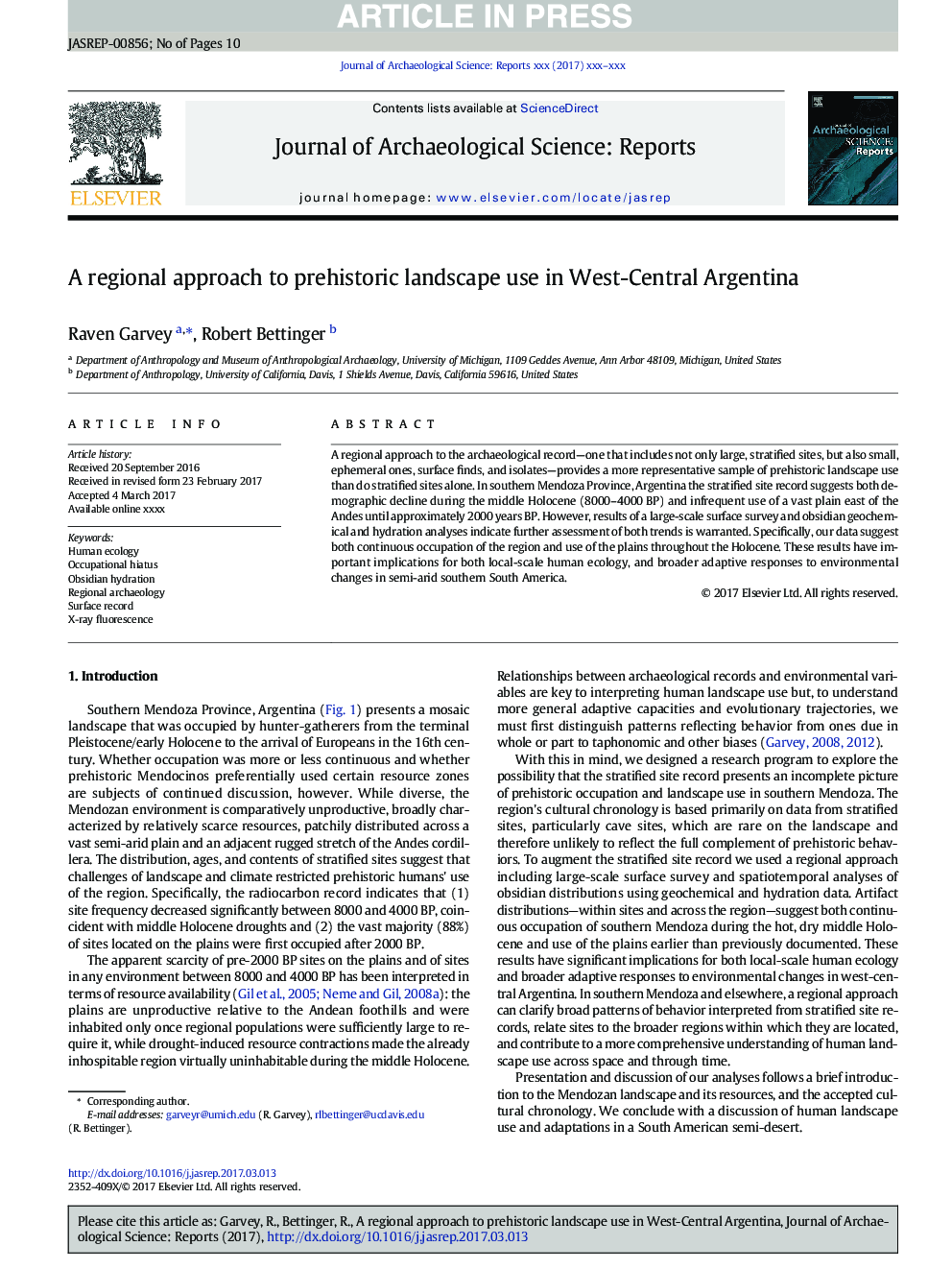| Article ID | Journal | Published Year | Pages | File Type |
|---|---|---|---|---|
| 7444277 | Journal of Archaeological Science: Reports | 2018 | 10 Pages |
Abstract
A regional approach to the archaeological record-one that includes not only large, stratified sites, but also small, ephemeral ones, surface finds, and isolates-provides a more representative sample of prehistoric landscape use than do stratified sites alone. In southern Mendoza Province, Argentina the stratified site record suggests both demographic decline during the middle Holocene (8000-4000 BP) and infrequent use of a vast plain east of the Andes until approximately 2000 years BP. However, results of a large-scale surface survey and obsidian geochemical and hydration analyses indicate further assessment of both trends is warranted. Specifically, our data suggest both continuous occupation of the region and use of the plains throughout the Holocene. These results have important implications for both local-scale human ecology, and broader adaptive responses to environmental changes in semi-arid southern South America.
Related Topics
Social Sciences and Humanities
Arts and Humanities
History
Authors
Raven Garvey, Robert Bettinger,
